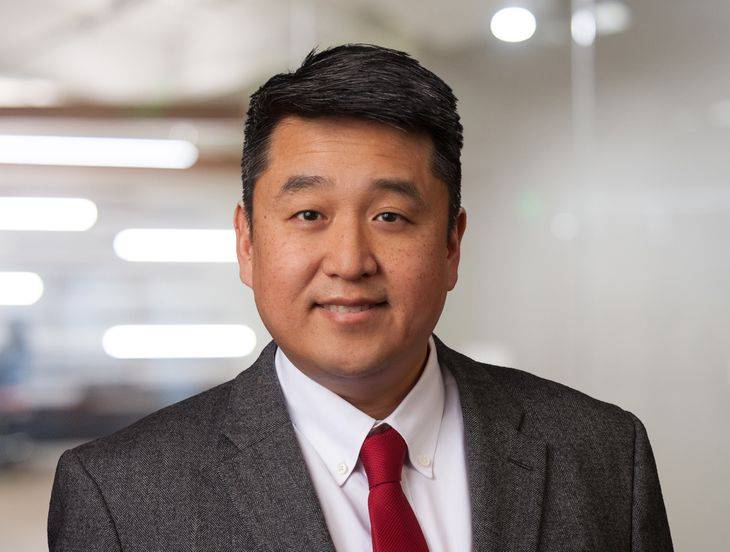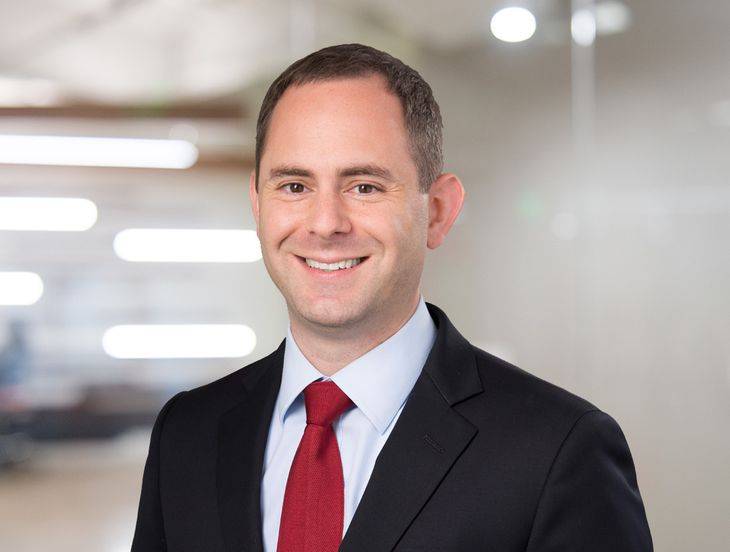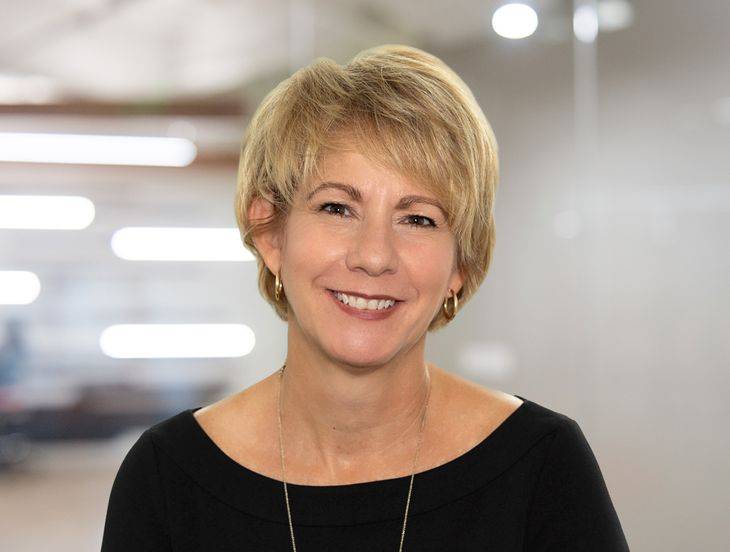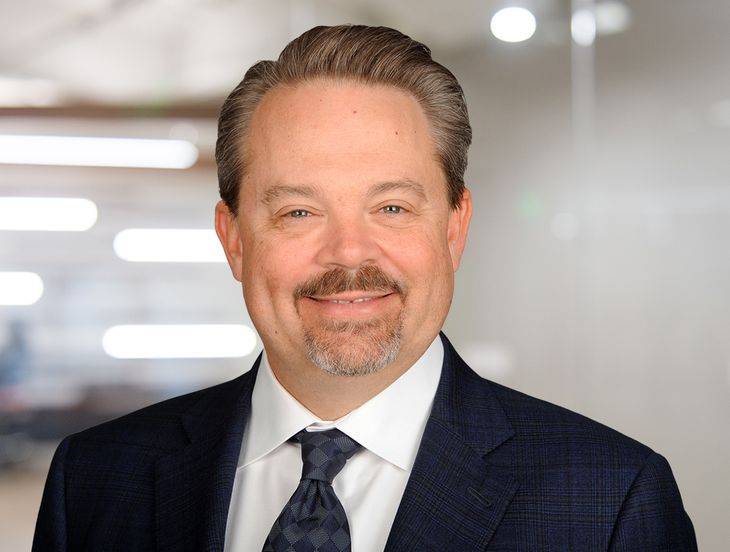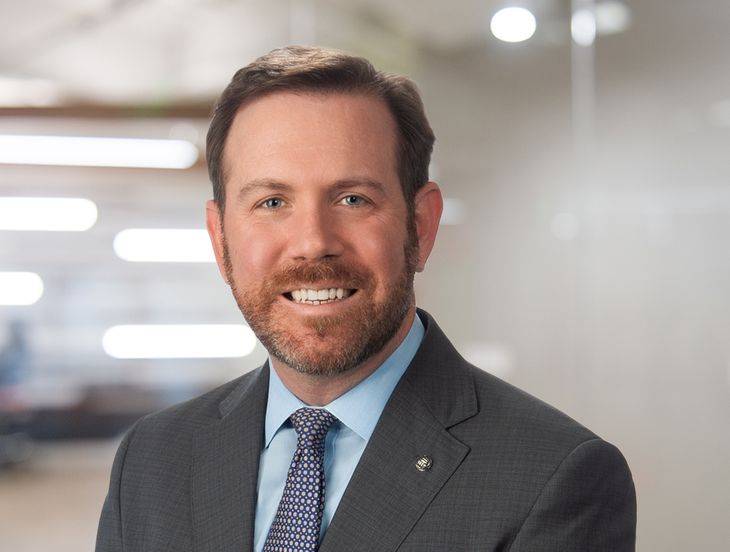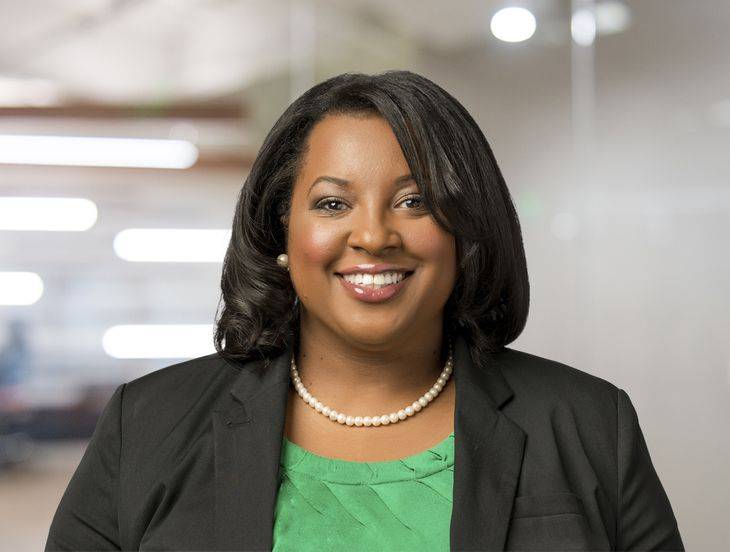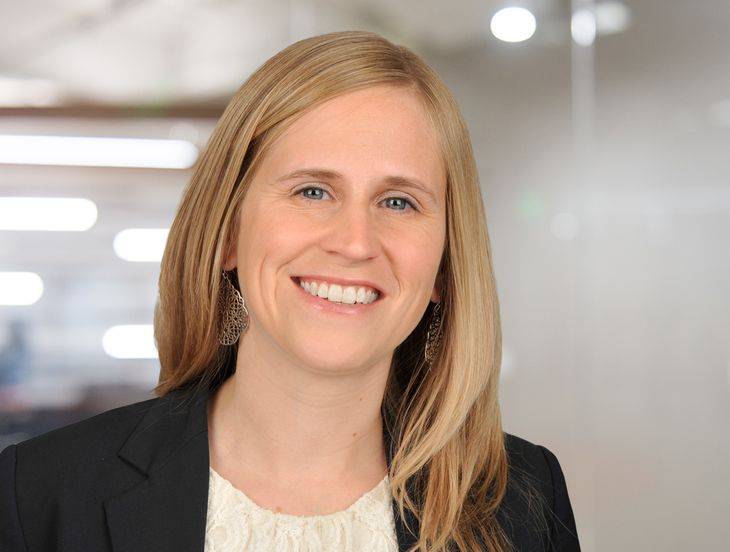What Employers Need To Know As Marty Walsh Tapped To Head Labor Department
Insights
1.11.21
Given the tumultuous news that occupied all of our attentions last week, you may have missed the announcement that President-elect Biden has nominated Boston Mayor Marty Walsh to be the next Secretary of Labor – the first union member to fill this role in nearly 50 years. The January 7 announcement is significant for the employment community given that the head of the Labor Department wields tremendous influence over workplace policy. Naturally, most employers are curious about what this transition will mean for them. To answer that question, we’ve once again assembled the opinions of some of our firm’s foremost thought leaders to help provide a glimpse into what you should expect from the U.S. Department of Labor for the foreseeable future. The consensus opinion? Get ready for a pendulum swing back toward worker-centered policy that employers last experienced during the eight-year Obama administration.
The Basics: What Does The USDOL Do?
The Secretary of Labor is a Cabinet-level position heading the U.S. Department of Labor (DOL), one of the federal agencies that has the widest and deepest impact on employers across the country. The agency impacts the inner workings of the American workplace on a daily basis. It enforces laws involving employers and unions, and more importantly, develops binding regulations and directives for a variety of workplace laws. It encompasses over 30 agencies, boards, offices, and programs that each have a specialized role when it comes to labor and employment law.
The three most commonly known agencies and offices within the DOL are the Wage and Hour Division (WHD), the Occupational Safety and Health Administration (OSHA), and the Office of Federal Contract Compliance Programs (OFCCP). However, the DOL also has a role to play with respect to family leave, joint employment, independent contractor classification, the gig economy, pay equity, and immigration law.
Who Is Marty Walsh?
Now that you have a clear understanding of what the DOL does, it’s time to focus our attention on the agency’s likely next leader. We say “likely” because Walsh will still need to be confirmed by the Senate, a prospect that seems far less daunting now that Democrats regained control of that chamber. Assuming that his nomination is approved in short order, employers should get familiar with his background to understand what they should soon expect from him.
In some ways, Walsh is cut from the same cloth as President-elect Biden, who hails himself as a “union man.” “If I have the honor of becoming your president,” Biden told the AFL-CIO during a campaign event in September, “I’m going to be the strongest labor president you have ever had.” By nominating Walsh, Biden has taken a big step towards fulfilling this campaign promise.
An early cancer survivor and child of Irish immigrant parents, Walsh went to work for Laborers’ Union Local 223 in Boston at age 21, following in his father’s footsteps. He went on to serve as president of the union and was soon elected to serve as a Massachusetts state representative – a position he held for 16 years. During this time, he also went back to school to earn a degree at Boston College at night. He was also elected to head the Building and Construction Trades Council, an umbrella organization of 20 local unions. He was elected Mayor of Boston in 2014 and has been in that position ever since.
Though he has been called an “old-fashioned labor Democrat” by some who closely observed his career, noted for his affinity for the working class labor movement, Walsh has also made a name for himself as both a flexible leader when it comes to working with management and a progressive liberal on social issues. For example, when he served as head of the Boston union umbrella group, he streamlined the city’s development agency to simplify the process of approving construction projects to the delight of workers and management alike. Bearing out his progressive bona fides, he strongly supports LGBTQ workers’ rights, action on climate change, and immigrant rights.
For these reasons, many view Walsh as a leader who aims for pragmatic solutions to problems and strives for unity and consensus-building. His first allegiance, however, will be towards workers. “Working people, labor unions, and those fighting every day for their shot at the middle class are the backbone of our economy and of this country," Walsh said in a tweet soon after Biden announced him as the nominee. “As Secretary of Labor, I’ll work just as hard for you as you do for your families and livelihoods. You have my word.” How will his personal philosophy impact employers when he takes over the DOL? Let’s take a look at some specific areas to develop our predictions.
Workplace Safety
Given the fact we are still in the midst of a devastating pandemic, the first issue most employers care about is how Walsh will treat workplace safety issues. With respect to OSHA and workplace safety and health issues, you can expect his first priority will be creating an emergency temporary standard for COVID-19. That’s according to David Klass, a partner in the Fisher Phillips Workplace Safety and Catastrophe Management Practice Group. “The Trump Administration has relied principally upon issuing COVID-19-related citations under the Occupational Safety and Health Act’s ‘general duty clause,’” says Klass. But because enforcement of the general duty clause can be difficult — precisely because it is such a general standard — and because OSHA’s citations under that clause have been limited to date, Klass says that “an emergency temporary standard likely will seek to provide more specific guidance regarding what actions employers must take to protect workers and reduce the spread of COVID-19, including development of workplace safety plans.” Based upon Walsh’s history with unions as well as his consensus-building governance style, it is expected that he will seek input from all sources regarding development of a temporary standard.
Aside from tackling issues related to COVID-19, Klass believes that Walsh will likely try to beef up OSHA’s enforcement program and continue regulatory changes that the Obama administration started and the Trump administration paused or reversed. On the enforcement side, the number of OSHA inspectors is at its lowest level ever in its 49-year history: there are approximately 761 OSHA inspectors working right now, compared to about 1,000 or so who were in place a decade ago. “Biden has promised to increase the number of inspectors and, with Democratic control of Congress, will seek funding to increase OSHA’s headcount. No doubt that Walsh will lead the charge in this effort,” says Klass. While Klass estimates that it will take about 18 months for new inspectors to be fully trained, “employers should begin preparing now for more inspections in the very near future.”
On the regulatory side, it is expected that Walsh will “hit the reset button” and restart Obama-era rules. For example, Walsh may resurrect the rule requiring certain employers to report (rather than simply record) detailed employee injury and illness information to OSHA, which information would then be posted on OSHA’s website. “This rule received a cold reception by the business community when originally promulgated,” Klass says, “and it is not expected a receive a warmer reception this time around.”
Walsh may also focus on enforcing the 2016 anti-retaliation rule — not enforced under the Trump administration — that, in part, prohibited employers from retaliating against employees for reporting work-related injuries or illnesses. “The rule impacted employers’ ability to have certain kinds of workplace safety incentive programs, injury and accident reporting programs, and post-accident drug testing practices,” Klass says.
Joint Employment, Independent Contractors, And The Future Of Work
Two big issues that Walsh will be confronted with on day one of his tenure will be the fate of the joint employment rule and the independent contractor rule. “I’d expect to see both rules face uphill battles to survive under the Biden administration and the Walsh DOL,” says John Polson, chair of the firm’s Staffing and Contingent Workers Practice Group and co-chair of the firm’s Gig Economy Practice Group. “They have both been on shaky grounds already, but Walsh’s nomination might be the final nail in the coffin.”
The joint employment rule, which took effect in March 2020 and aimed to provide clarity when it came to the employment status of workers who claim to be owed legal obligations under the Fair Labor Standards Act by more than one business entity at a time, has been shelved since September. That’s when a New York federal judge struck down the rule for having “major flaws” that did not comport with federal law. “Walsh’s appointment to the head of the DOL probably means that the agency will not take up the banner in a fight to resurrect this rule,” says Polson. He believes it is likely instead that the agency will revert to something similar to the Obama-era standard that sought to capture as many multi-participant arrangements as possible — such as outside-party management, joint ventures, staffing services, employee leasing, temporary help, subcontracting, certain kinds of “job sharing,” and dedicated vendors or suppliers – into the joint employment paradigm.
The independent contractor rule is of more recent vintage. In fact, it was just finalized last week, and is slated to take effect on March 8. It aims to make it much easier for businesses to classify workers as independent contractors, which would be especially helpful for gig economy companies and those launching gig-like initiatives as a part of their business model. But it, too, faces a precarious position. “President-elect Biden has already announced that he will freeze the rule before it becomes law of the land, and at that point all bets are off,” says Polson. For one thing, the rule will probably be challenged in court by unions, worker advocates, and state attorneys general who believe it was implemented too quickly and doesn’t pass regulatory muster. Polson expects Walsh’s DOL to either welcome such challenges or affirmatively take action to strike the rule itself. And while business advocates may launch their own litigation to salvage the rule, we may also see Walsh’s DOL take its own steps to try to implement its own rulemaking that would be decidedly more pro-worker in nature. “Whatever the outcome, we can expect 2021 to be filled with twists and turns on this debate, so employers should prepare for this uncertainty by working closely with counsel as they examine their business models,” says Polson.
Pay Equity And Affirmative Action
As a state legislator and then Mayor of Boston, Walsh has been a long-standing advocate for pay equity between genders and among races. This is according to Cheryl Pinarchick, the co-chair of the firm’s Pay Equity Practice Group. She is very familiar with Walsh given that she also serves as the firm’s Regional Managing Partner of the firm’s Boston office.
“Massachusetts was the first state to overhaul its equal pay law to help try to close the wage gap,” she says. “But even before that, Walsh partnered with the Boston Women’s Workforce Council to implement the 100% Talent Compact, under which over 250 Boston-area employers pledged to help close the gender and racial wage gap in Boston by taking on certain initiatives.” Among them, employers agreed to examine their pay data and practices to assess whether wage gaps exist and if so to take steps to reduce them, anonymously contribute wage data to create a snapshot of what gender and race wage gaps look like in Greater Boston, and participate in quarterly briefings and an annual Effective Practices Conference to share interventions that worked and learn about cutting-edge research and management practices to advance wage equity. As mayor, his office also partnered with the American Association of University Women to start WorkSmart, which offers free workshops to women designed to provide them with the tools necessary to successfully negotiate for higher salaries.
In addition to implementing strategies to try to close the pay gap, Walsh is also an advocate for efforts to close the opportunity gap. He is a proponent of the Massachusetts Pay Transparency and Pipeline Advancement Act. If passed, Pinarchick notes, it would require organizations with more than 100 employees to report the gender and race of employees holding specific management titles, make that information available to the public, and establish a fund to provide professional development for employees in companies where disparities are the greatest.
So what does this mean for the nation’s employers? “You can assume he will bring these same energies and philosophy to his role as head of the DOL,” says Pinarchick. As Secretary of Labor, she expects to see Walsh continue to implement strategies designed to help close the pay gap and the opportunity gap at the national level, including increased in investigations into pay disparities and enforcement actions against federal contractors. “I’d also expect Walsh to join President-elect Biden in advocating for the passage of the Paycheck Fairness Act which stalled in the Senate under the Trump administration but will likely get an up-or-down vote in the new Congress.”
On a related note, we can expect some activity when it comes to employers that do business with the federal government (federal contractors and subcontractors) and thus must comply with certain nondiscrimination laws, especially those enforced by the Office of Federal Contract Compliance Programs (OFCCP). Sheila Willis, an attorney in the firm’s Affirmative Action and Federal Contract Compliance Practice Group, believes that federal contractors will see a renewed focus on diversity, equity, and inclusion, starting the DOL supporting the rescission of Executive Order 13950, the order that limited employers’ abilities to offer training on subjects such as systemic racism and unconscious bias.
Willis also believes that we can expect to see increased enforcement activity under Walsh’s leadership. “Surprisingly, under the Trump administration, the OFCCP has recovered more in the last four years than it had under the last eight years,” she says. Much of this may be due to the rules and mechanisms put into place by the Obama administration that took root in the last four years. “But with an increased priority on workers and workers’ rights under Walsh, we can expect even more enforcement from the agency over the next four years,” says Willis. She expects a continued focus on contractor’s practices with regard to promotions, veterans, and individuals with disabilities.
Wage And Hour Law
“I expect three big actions from the Walsh DOL when it comes to wage and hour law,” says Matt Simpson, a leader in the firm’s Wage and Hour Law Practice Group. The Trump administration revived the practice of issuing opinion letters to provide employers guidance on complex wage-hour issues. Whether Secretary Walsh continues this practice remains to be seen. “However, we do expect that he’ll rescind several Trump administration letters covering a wide range of topics, including certain employees’ exempt status, determining non-exempt employees’ hours worked, and calculating the regular rate for overtime purposes,” says Simpson.
Second, he expects Secretary Walsh will use the DOL’s traditional rulemaking authority to try to unwind a number of key developments in wage and hour law over the last four years. Which rules does Simpson believe are on the chopping block? “The prime targets are the Trump-era rules regarding the application of the tip credit and fluctuating workweek to the FLSA’s minimum wage and overtime requirements.”
Third, Simpson believes it is all but inevitable that the DOL’s Wage Hour Division under Walsh will increase enforcement efforts. “In July, the DOL announced that it would not seek liquidated damages against employers in wage and hour investigations as a matter of course. I’d expect Secretary Walsh will revive this enforcement tactic – and that will just be the first of many steps along those lines we can expect to see in the coming years.”
On another note, Simpson believes that Walsh will support President-elect Biden’s efforts to increase the federal minimum wage to $15 per hour. “The DOL does not have any direct authority in amending federal law to increase the minimum wage – that will require an act of Congress,” says Simpson. However, he expects Walsh to throw his full weight behind such efforts, which we can expect to see get off the ground sometime in 2021.
Employee Leaves
According to Megan Winter, co-chair of the firm’s Employee Leaves Practice Group, “Walsh has promised to fight for working people – and we expect his DOL will support the expansion of existing FMLA rights to the extent possible under current law.”
There is little doubt that the DOL would support the passage of paid family leave by Congress under Walsh’s leadership. He was mayor of Boston at the time that it passed an ordinance providing six weeks of paid parental leave for city employees. In support of that ordinance, he co-authored a 2015 Opinion piece in the Boston Globe entitled “Paid parental leave is a must for working families” in which he advocated for the passage of paid parental leave for Boston city employees. He cited increased fulfillment, positivity, and productivity from the workforce as reasons to expand paid leave as well as a failure of workplace policies to keep pace with changing American families.
While federal paid family leave has long been a part of the Democratic platform, paid family leave has not been cited as a priority by President-elect Biden or congressional leadership given the other current challenges with COVID-19 and the economy. “But his reasoning for supporting paid leave is instructive to his approach to existing Family Medical Leave Law,” says Winter. She believes a Walsh DOL would likely interpret existing FMLA authority to expand access to leave as much as possible under the current statutes, so that is something employers should begin preparing for.
Immigration
Most employers may not be familiar with the fact that the USDOL has a role to play when it comes to workplace immigration matters. Although limited in nature, Walsh will have some impact on this issue, says Davis Bae, the co-chair of the firm’s Immigration Law Practice Group. “The Department of Labor’s role on immigration policy is primarily related to the protection of wages for U.S. workers,” he says.
This is done in two types of processes which have similar names. Labor Condition Applications establish of safe harbor wages and conditions for foreign workers and require attestations of employers to confirm that U.S. workers are not harmed by the potential hire of foreign labor. The second is called a Labor Certification, which documents that an employer is unable to find qualified U.S. workers for either permanent or temporary positions.
“Under the Trump administration,” Bae notes, “the calculation of standard safe harbor wages for foreign workers in Labor Condition Applications were artificially increased without justification or statistical support. These changes were ultimately struck down through litigation.” These attempted changes would have impacted the ability of employers to use various significant temporary visas for professionals (H-1B) and seasonal workers (H-2), as well as others. While no significant changes were seen in the processing of Labor Certifications, the processing of those job shortage applications were regularly threatened under the Trump administration and likely would have gone through extensive change if Trump had been re-elected.
As mayor of Boston, Bae notes, Walsh has been a staunch supporter of immigrants and immigration policies. In fact, he reaffirmed Boston’s status as a sanctuary city the same week that Trump threatened to pull federal funding for such cities in 2017. “We expect as the head of the Department of Labor, there will likely be a return to more traditional policies on the intersection between immigration and labor,” says Bae.
Conclusion
We will continue to monitor further developments at the USDOL and provide updates regarding all of these matters of interest, so you should ensure you are subscribed to Fisher Phillips’ alert system to gather the most up-to-date information. We have also assembled all of our firm’s thought leadership on what employers can expect under the incoming administration in our Biden Administration Resource Center for Employers. If you have questions, please contact your Fisher Phillips attorney.
This Legal Alert provides an overview of agency positions and predictions. It is not intended to be, and should not be construed as, legal advice for any particular fact situation.
Related People
-
- Davis C. Bae
- Regional Managing Partner
-
- David Klass
- Partner
-
- Richard R. Meneghello
- Chief Content Officer
-
- Cheryl Pinarchick
- Senior Counsel
-
- John M. Polson
- Chairman & Managing Partner
-
- Matthew R. Simpson
- Partner
-
- Sheila M. Abron
- Partner
-
- Megan C. Winter
- Partner
